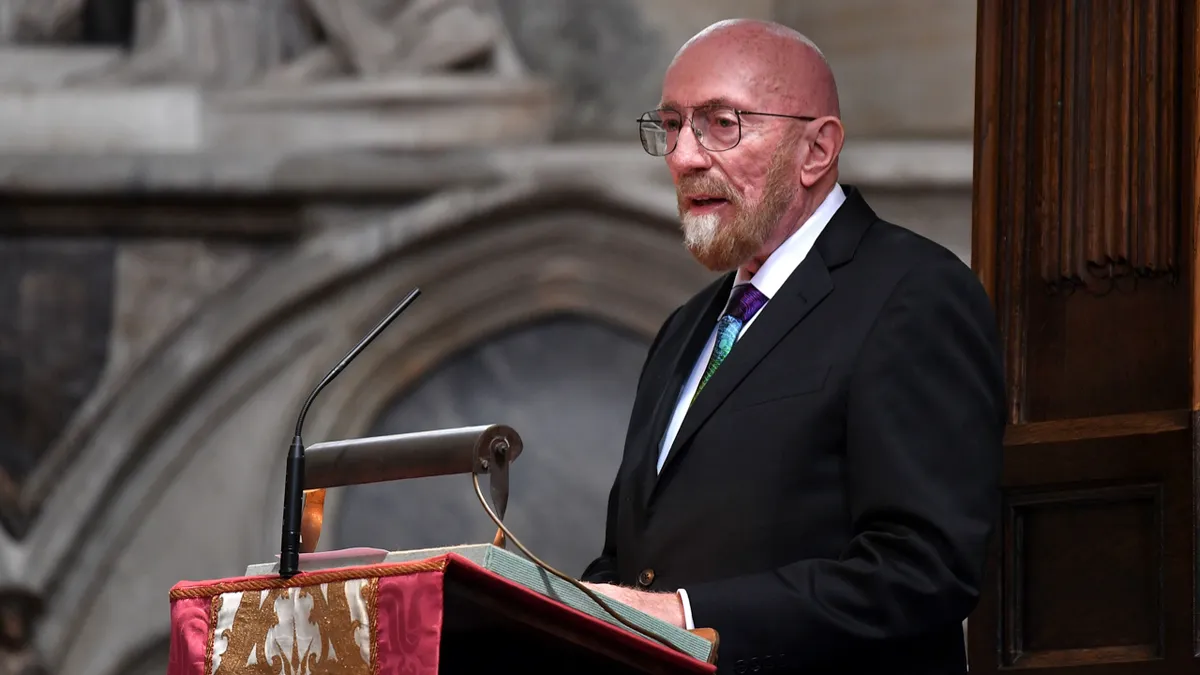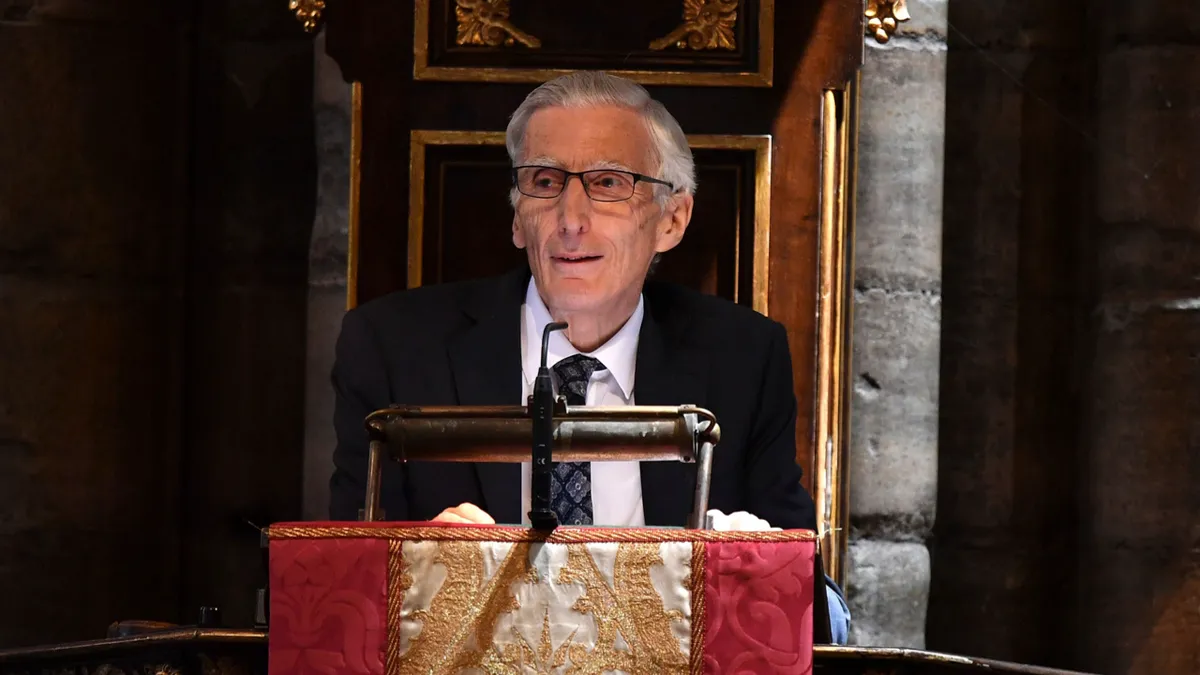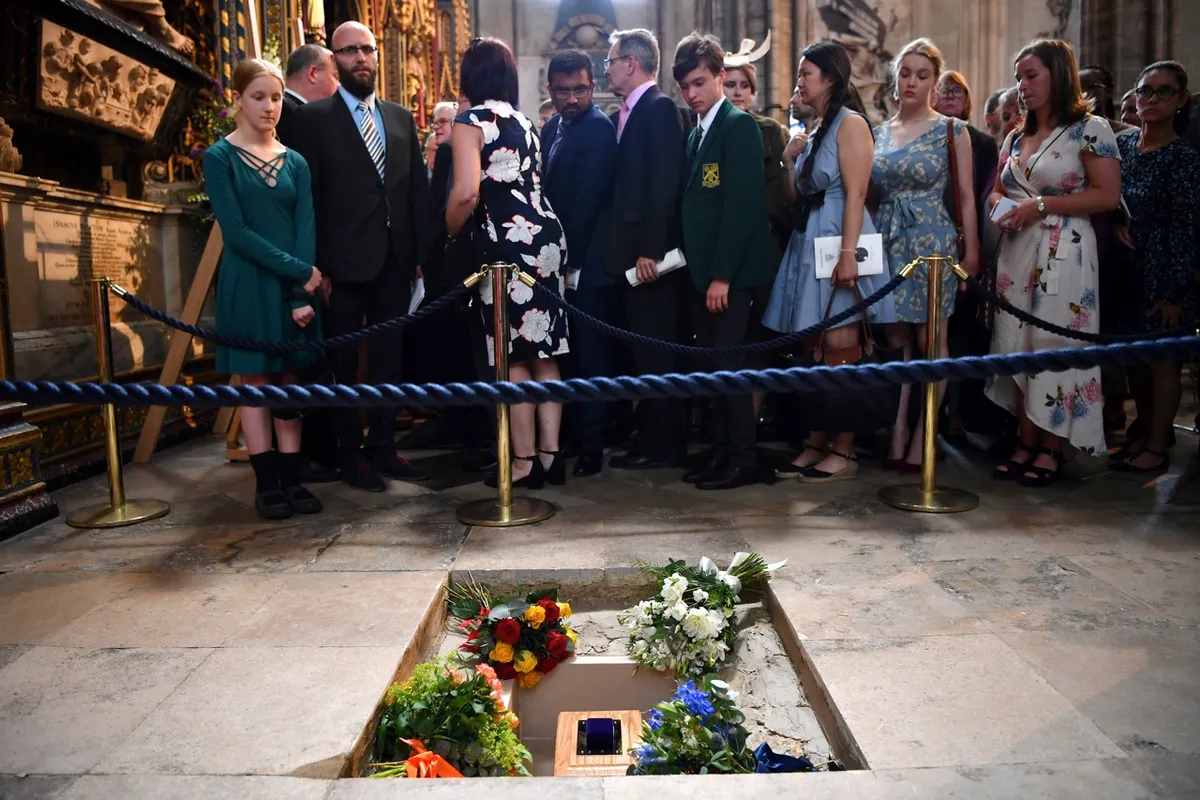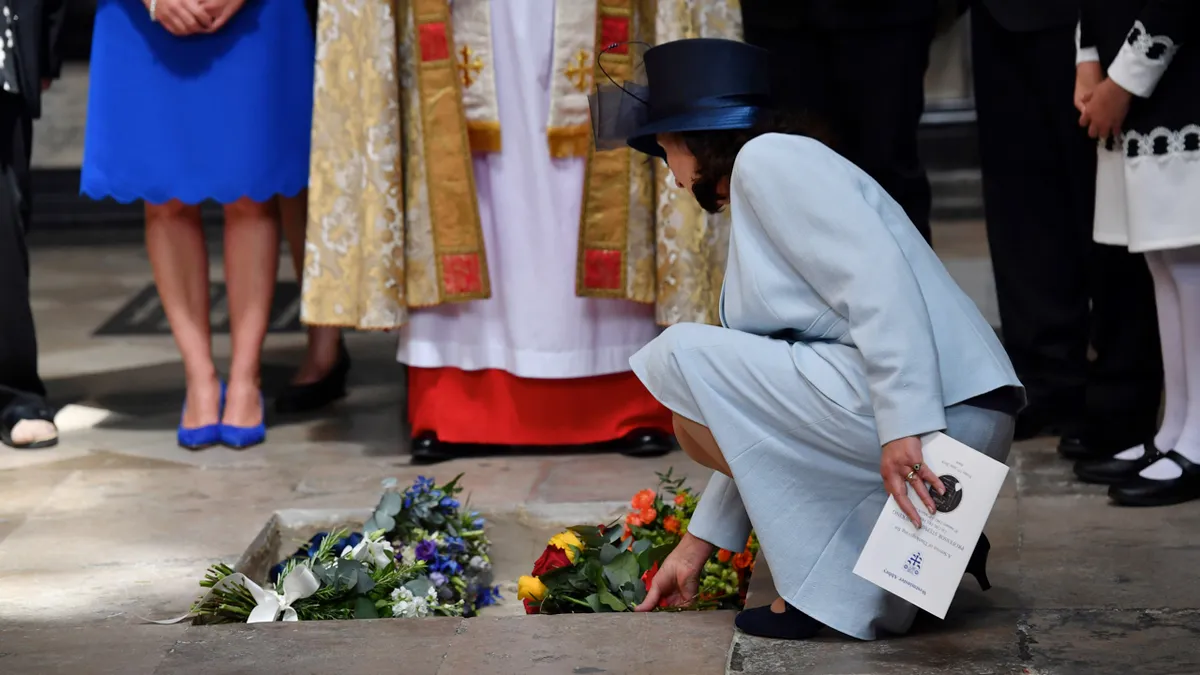Professor Stephen Hawking’s ashes were interred on 15 June 2018 at a memorial service in Westminster Abbey. The physicist, who died on 14 March aged 76, was laid to rest in between fellow scientists Sir Isaac Newton and Sir Charles Darwin in Scientists’ Corner.
Over 1,000 people joined members of Hawking’s family, friends and academic colleagues to mark the occasion.

Spirits were high during the event, however, and the occasion was not a sombre affair. The solemnity of his funeral on 31 March was replaced with a sense of reverence for his remarkable achievements in science, his resilience in the face of the life-changing effects of motor neurone disease and recognition of his ability to reach beyond the scientific community and share his insights with the general public.
The ceremony began with an organ rendition of ‘Venus, the Bringer of Peace’ from Gustav Holst’s The Planets and closed with Wagner’s ‘Ride of the Valkyries’.

Instead of mourners dressed in black, the Abbey’s aisles were filled with people from all walks of life and all over the world – some of whom had won tickets to attend by taking part in a special ballot – wearing colourful suits, dresses and uniforms.
Among those were some of Hawking’s former colleagues, including Kip Thorne and the Astronomer Royal Sir Martin Rees, current science popularisers such as Jim Al-Khalili and Professor Bryan Cox, astronauts Tim Peake and Chris Hadfield, fellow Cambridge graduate and model Lily Cole, the actor Benedict Cumberbatch, comedian and author David Walliams and a Marylin Monroe lookalike (Hawking was said to be a big fan of the Hollywood star).

It’s not yet clear if any time travellers were present although invitations were extended to anyone from the future with the capability to attend. There were however, a number of people suffering from motor neurone disease, the condition that Hawking was diagnosed with during his early 20s and later led to the loss of his ability to speak.
Above Hawking’s ashes will be laid a black memorial stone made from Caithness slate from the far north of Scotland and chosen for its dark appearance that conveys a sense of deep space.

It features an inscription of Hawking’s most famous equation, describing the entropy of black holes, and the words ‘Here lies what was the mortal of Stephen Hawking 1942-2018’. An English translation of the Latin phrase (Hic depositum est quod mortale fuit Isacci Newton) that appears on Newton’s memorial stone nearby. Perhaps in one last nod to Hawking’s ability to strike a chord with the common man as well as his fellow scientists.

Listen to the Science Focus Podcast:
Follow Science Focus onTwitter,Facebook, Instagramand Flipboard
